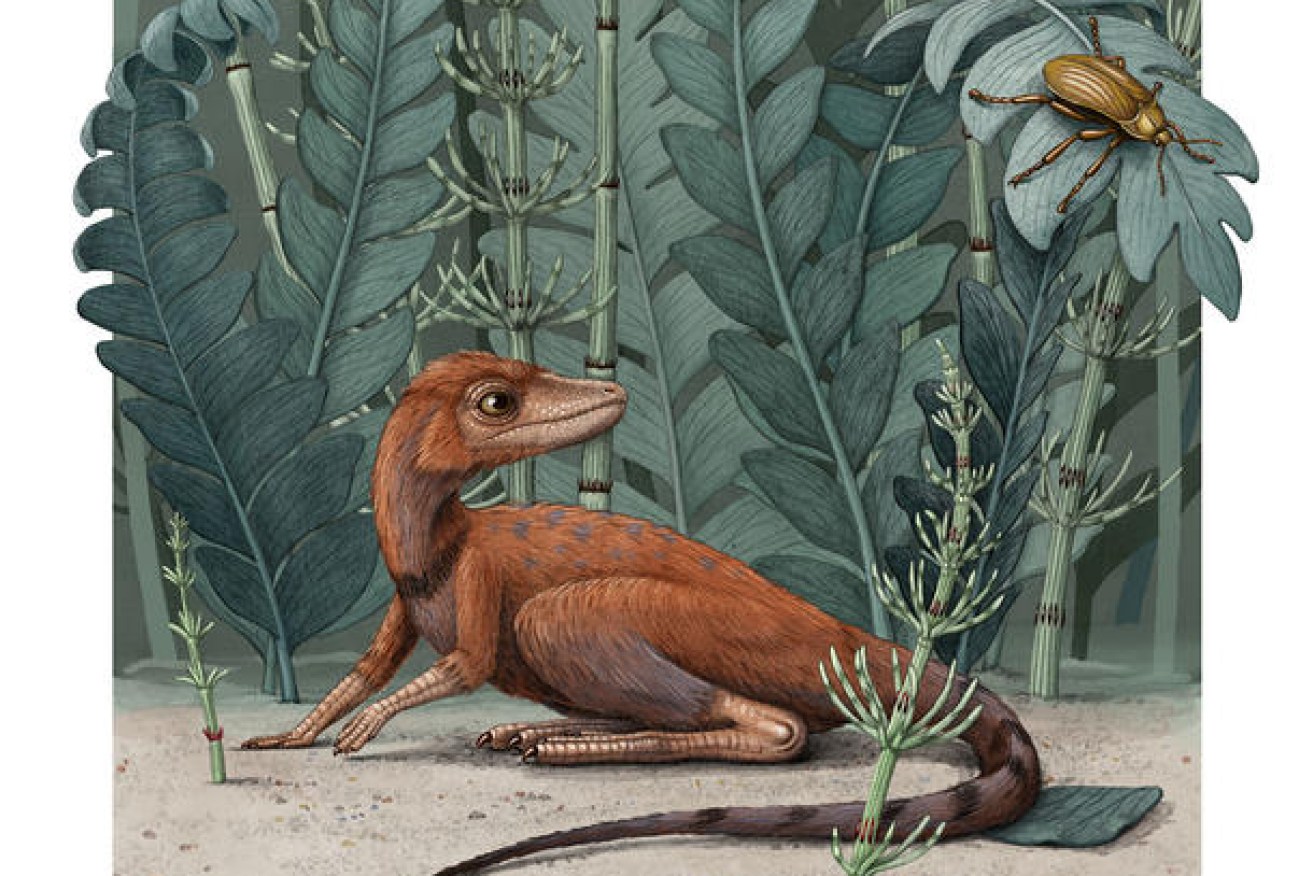‘Tiny bug slayer’: Meet Kongonaphon kely, the dinosaurs’ pint-sized great-grandfather


The dinosaurs' ancestor was just 10 centimetres tall and full of mystery. Image: American Museum of Natural History
The mighty dinosaurs and flying pterosaurs appear to have evolved from a creature so small you could have held it in your hand.
This is the story of a newly described species from Madagascar that lived around 237 million years ago, during the Triassic period.
“The fossil reptile, named Kongonaphon kely, or ‘tiny bug slayer’, would have stood just 10 centimetres (or about 4 inches) tall,” the American Museum of Natural History said in a statement.
Dr Christian Kammerer is a research curator in paleontology at the North Carolina Museum of Natural Sciences and a former Gerstner Scholar at the American Museum of Natural History.
“There’s a general perception of dinosaurs as being giants. But this new animal is very close to the divergence of dinosaurs and pterosaurs, and it’s shockingly small,” he said.
A big find after all
Dinosaurs and pterosaurs both belong to the group Ornithodira.
But as the AMNH notes: “Their origins, however, are poorly known, as few specimens from near the root of this lineage have been found.”
Hey presto! Kongonaphon kely comes from the root of this group — a distant grandfather.
Kongonaphon isn’t the first small animal found near the root of the ornithodiran family tree, said Dr Kammerer. Previously, such specimens were considered “isolated exceptions to the rule.”
It was broadly thought by scientists “that body size remained similar among the first archosaurs – the larger reptile group that includes birds, crocodilians, non-avian dinosaurs, and pterosaurs – and the earliest ornithodirans, before increasing to gigantic proportions in the dinosaur lineage.”

Scientists excavate fossils at sunset in southwestern Madagascar. Kongonaphon kely, a new tiny reptile from the Triassic that was an early relative of dinosaurs and pterosaurs, was one of the hundreds of fossils uncovered at this site. Photo: J. Flynn
Kongonaphon tells an interesting story that complicates the early evolution of ornithodirans – and the subsequent rise of the dinosaur. There was a period when the emerging ornithodiran line shrank in size, probably as an adaptation to hard times.
Honey, they shrank the dinosaurs for their own good
The researchers, analysing changes in body size throughout archosaur evolution, “found compelling evidence that it decreased sharply early in the history of the dinosaur-pterosaur lineage,” Dr Kammerer said.
He said the “miniaturization” event indicates that “the dinosaur and pterosaur lineages originated from extremely small ancestors.”
Dr Kammerer said that wear on the teeth of Kongonaphon suggests it ate insects.
“A shift to insectivory, which is associated with small body size, may have helped early ornithodirans survive by occupying a niche different from their mostly meat-eating contemporaneous relatives,” he said.
According to the academy, the fossils of Kongonaphon were discovered in 1998 in Madagascar by a team of researchers led by American Museum of Natural History Frick Curator of Fossil Mammals John Flynn (who worked at Chicago’s Field Museum at the time).
Professor Flynn is also principal investigator at the Sackler Institute for Comparative Genomics, anddDean and professor at the Richard Gilder Graduate School.
In a prepared statement, Dr Flynn said:
“This fossil site in southwestern Madagascar from a poorly known time interval globally has produced some amazing fossils, and this tiny specimen was jumbled in among the hundreds we’ve collected from the site over the years.
“It took some time before we could focus on these bones, but once we did, it was clear we had something unique and worth a closer look.”








